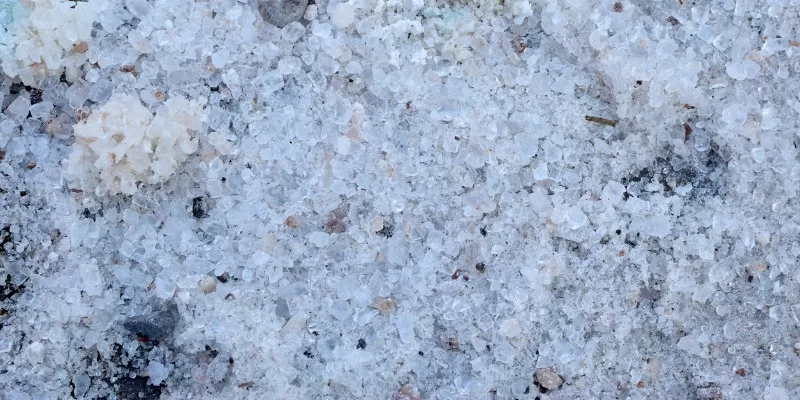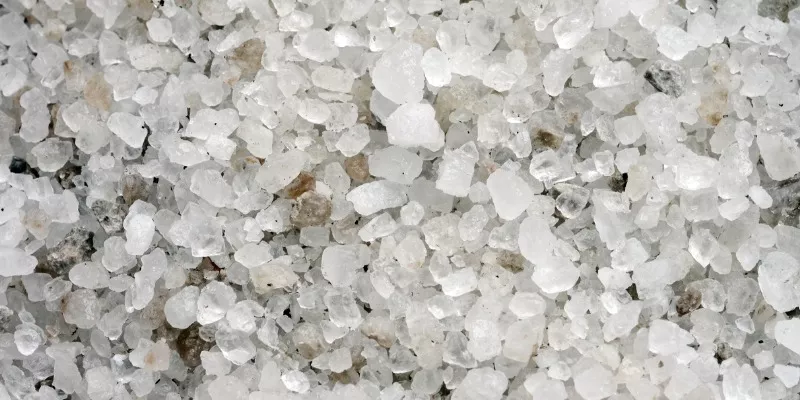
Winter is synonymous with cold weather and heavy precipitation, such as snow, freezing rain, and icy road conditions. Many of us are keen to bring out our snowblowers, shovels, and road salt to make it through winter storms.
Sometimes though, rock salt can harden, which limits its usefulness. When this occurs, breaking apart this material to spread evenly over icy surfaces is a challenge. If you’re wondering how you can store road salt and prevent it from hardening, consider adopting these ideas. Also, read along to discover what you can do if it happens.
What is Road Salt?
Road salt, also called rock salt, is a grainy and coarse-textured material. It is comprised of the same minerals as table salt. It is essentially halite, which is the mineral form of sodium chloride. Unlike table salt, road salt is not purified and is not milled to form smaller molecules. Instead, it is used in its unaltered rock form combined with iodine and other additives to avoid clumping.
What Causes Road Salt to Harden?
Applying a layer of road salt to streets breaks down the ice, creating brine, which is a mixture of water and salt. Brine’s freezing point is considerably lower than water, so when it is applied to ice, it melts. With the continued presence of road salt, ice is less likely to form again.
Rock salt’s attraction to water makes it vulnerable to hardening, particularly in humid temperatures or areas with moisture. It is a hygroscopic solid that attracts water and heat from its environment. Due to these properties, road salt is susceptible to hardening when significant amounts of water are absorbed. This modification causes its composition to change, resulting in clumping or the hardening of the salt.
How to Avoid Clumping
Hardening of rock salt can be avoided by storing it in a climate-controlled environment. By being stored in this setting, it will withstand various temperatures and continue to be functional until used up completely.
Once the bag is open, consider storing it in a sealable airtight container. Performing this action in early spring is crucial. This action will provide the same regulated conditions mentioned above to sustain its lifespan, throughout the warmer months.
Furthermore, placing bits of charcoal in a bag of rock salt is also beneficial. The charcoal prevents hardening. It will also absorb any moisture and prevent the rock salt from clumping.
What to Do When It Happens
If your road salt hardens, there are a couple of things you can do to restore it:
- Protect your eyes and use a hammer or power drill to break apart the hardened pieces.
- Or drop the bag on concrete for separation.
- Or place the clumps in warm water to dissolve it into smaller pieces.
Lane’s Landscaping Supplies Can Help with Road Salt
The winter often creates weather conditions that can make walkways icy. We can help you to clear these pathways. For all of your road salt needs this winter, contact Lane’s Landscaping Supplies.
Contact us to order salt today for the winter season.
Sources
https://www.zoutman.com/saltipedia/en/deicing/storage-of-road-salt/
https://www.snowmagazineonline.com/article/snow-0510-salt-deicing-cover-it/
https://lifehacker.com/use-leftover-charcoal-to-keep-deicing-salt-from-clumpin-5448016
https://sciencing.com/how-to-break-up-rock-salt-12237644.html


